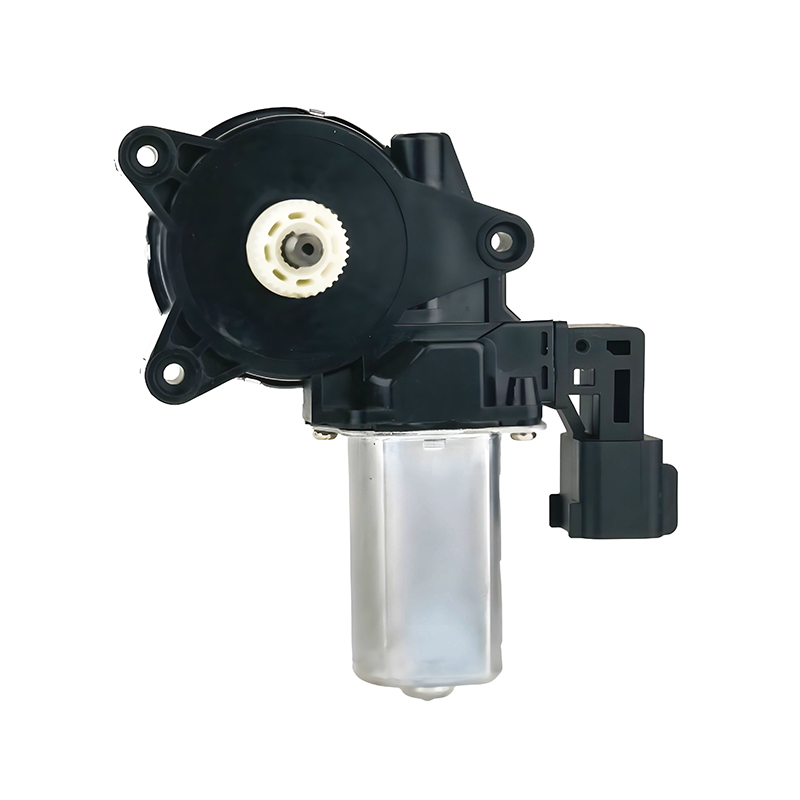In the automotive industry, innovation in motor technology continues to enhance vehicle functionality and driver comfort. Among the critical components that contribute to a vehicle's convenience features are automotive precision micro motors. These motors play an essential role in powering various mechanisms, including sunroofs, windows, and even seats. Today, a key development worth exploring is the availability of both brush-type and brushless sunroof motor options, each offering unique advantages for vehicle manufacturers and users alike.

Sunroof motors are specialized components designed to operate the opening and closing mechanisms of vehicle sunroofs. These motors must combine reliability, efficiency, and quiet operation to ensure a seamless experience. When considering sunroof motor options, manufacturers often weigh the benefits of brush-type versus brushless designs.
Brush-type motors have been a staple in automotive applications for many years. They use carbon brushes to transfer electricity to the motor's rotating part, known as the rotor. This design is relatively simple and has proven reliable in many contexts. Brush-type sunroof motors typically provide a cost-effective solution and are compatible with a wide range of sunroof designs. However, they do involve mechanical wear due to brush friction, which can affect the motor's lifespan and maintenance requirements.
On the other hand, brushless sunroof motors are a newer technology that eliminates the need for brushes altogether. Instead, these motors use electronic controllers to manage current delivery to the motor coils, allowing the rotor to spin without physical contact. This design reduces mechanical wear and increases the motor's overall durability. Brushless motors are also known for smoother operation and quieter performance, which are valuable qualities for sunroof applications where noise reduction enhances cabin comfort.
The choice between brush-type and brushless sunroof motors depends on multiple factors, including cost considerations, performance needs, and design constraints. While brushless motors may offer longer service life and quieter operation, brush-type motors remain relevant in applications where simplicity and cost-efficiency are prioritized.
Automotive precision micro motors extend beyond sunroof applications. For example, the motor for the window is another critical component requiring reliable and precise control. These motors must handle repetitive up-and-down movements and withstand various environmental conditions. Both brush-type and brushless motors have found applications in window lift mechanisms, with brushless variants gaining attention for their lower noise and extended durability.
Similarly, desk lift motor designs, while more commonly associated with office furniture, have inspired some advancements in automotive motor technology. The precise control and smooth operation required for desk lifts mirror the performance expectations for automotive micro motors used in adjustable seats and window systems. This cross-industry influence highlights how developments in one sector can inform and improve products in another.
When evaluating sunroof motors, it is important to consider the compatibility of the motor with existing control systems. Brushless sunroof motors often require more complex electronic control units (ECUs) but provide flexibility in speed and torque control. Brush-type motors, with their simpler construction, typically need less sophisticated controllers, which can reduce system complexity and cost.
Automotive precision micro motors, including those used for the sunroof, window, and seat adjustment, benefit from ongoing improvements in materials and manufacturing techniques. Advances in magnet technology, coil winding methods, and thermal management contribute to motors that operate efficiently over longer lifespans. These enhancements are critical as modern vehicles integrate more electronic features, requiring dependable motor performance.
The motor for the window plays a significant role in driver and passenger convenience. Both brush-type and brushless options are evaluated for factors such as torque output, noise levels, and durability. Brushless motors have become increasingly popular in premium vehicle segments due to their quiet operation, but brush-type motors continue to be a reliable choice for many standard applications.
Similarly, desk lift motor technology, with its emphasis on precision and smooth movement, offers insights that benefit the design of automotive micro motors. For instance, the demand for motors that operate quietly and reliably over numerous cycles is common to both industries. Automotive precision micro motors benefit from these shared technological advances, contributing to enhanced user experiences in vehicle interiors.
Manufacturers offering both brush-type and brushless sunroof motor options provide flexibility to automotive designers. This range allows customization based on vehicle type, target market, and performance requirements. For vehicles where noise reduction and long service life are prioritized, brushless sunroof motors may be preferable. Conversely, brush-type motors may suit applications emphasizing cost-effectiveness without compromising essential functionality.
Throughout the vehicle, various automotive precision micro motors work in concert to provide smooth operation of convenience features. The motor for the window and the sunroof motor are among the more frequently used, and their reliability is critical. With the availability of both brush-type and brushless sunroof motor options, manufacturers can tailor their designs to meet specific performance and cost needs.
In conclusion, brush-type and brushless sunroof motor options each bring valuable attributes to automotive applications. While brushless motors offer advantages in noise reduction and durability, brush-type motors maintain their place through simplicity and cost-effectiveness. The interplay between sunroof motors, window motors, and related micro motors continues to evolve, driven by advances in technology and user expectations. As automotive precision micro motors improve, vehicles will benefit from enhanced comfort, reliability, and operational efficiency.
Your email address will not be published. Required field are marked*